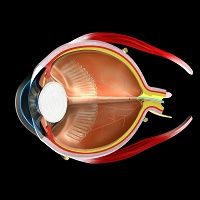Article
Epilepsy Drug May Protect Against Optic Neuritis in Multiple Sclerosis
Author(s):
The anticonvulsant drug phenytoin may protect neural tissue in patients with optic neuritis, a common symptom of multiple sclerosis.

Multiple sclerosis (MS) patients may be able to protect nerve damage using an epilepsy drug, according to a report published in the journal Lancet Neurology. The findings were presented at the American Academy of Neurology 67th Annual Meeting.
Researchers from the University College London Institute of Neurology observed 86 patients in order to establish whether sodium channel inhibition with phenytoin is neuroprotective in patients with optic neuritis. The patients were aged 18 to 60 years, presenting within two weeks of onset, and were assigned to receive oral phenytoin (maintenance dose 4 mg/ kg per day if randomized before or on July 16, 2013, and 6 mg/ kg per day if randomized on or after July 17, 2013) or placebo for 3 months. The patients were examined based on time from onset, study location, previous MS diagnosis, use of disease modifying treatment, and use of corticosteroids for optic neuritis.
Phenytoin, an anticonvulsant drug, had on average about 30 percent less damage to nerve fiber layer compared to the placebo patients. The study authors explained that in the inflamed areas, the axons of nerve cells were flooded with sodium, causing a calcium buildup; this caused cell death. The researchers believe that if sodium entry into the cell can be blocked, there would be a away to prevent this cell death.
“We wanted to find out if the theory that blocking sodium currents, which we developed in basic work over many years, actually served to protect neural tissue — a test bed to see if we can achieve neuroprotection,” study leader Raj Kapoor explained in a press release. “These are promising results and if our findings are confirmed by larger, phase III trials, could lead to a new treatment that protects nerves from the damage caused both in optic neuritis and throughout the central nervous system in other attacks of MS.”
This study was important, the researchers said, because optic neuritis is often an early symptom of MS. Additionally, changes in the optic nerve are easy to measure, which provide a window of opportunity for investigation in early MS patients.
“We have been trying to achieve neuroprotection ever since we realized that disability was due to nerve damage, so it is very encouraging that we have now found one way of doing so,” Kapoor concluded. “We hope this will open the door to significant progress in preventing disability not only in optic neuritis, but also in MS as a whole.”




